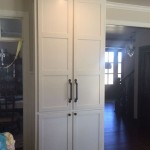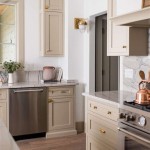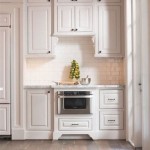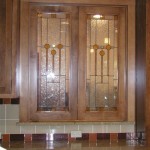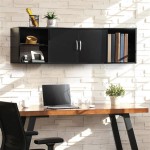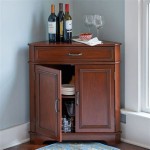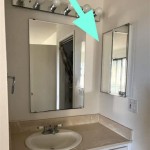Knob Placement On Kitchen Cabinet Doors: A Comprehensive Guide
The placement of knobs on kitchen cabinet doors may seem like a minor detail, but it significantly impacts both the functionality and aesthetics of a kitchen. Correct knob placement contributes to ease of use, prevents undue stress on cabinet hardware, and enhances the overall design coherence of the kitchen space. This article provides a comprehensive guide to understanding the principles of knob placement, considering various factors such as door style, cabinet size, and user preferences.
Understanding Standard Knob Placement
While personal preference plays a role, there are generally accepted standard guidelines for knob placement that consider both ergonomics and visual appeal. Deviating too far from these standards can lead to an awkward or unbalanced look. Furthermore, incorrect placement can increase the risk of damage to cabinet doors and frames over time. These guidelines provide a solid foundation upon which to build when customizing knob placement for a specific kitchen design.
For standard cabinet doors, a general rule is to position the knob between 2 and 3 inches from the bottom corner on base cabinets and 2 and 3 inches from the top corner on upper cabinets. This distance is measured from both the edge of the door and the top or bottom edge, depending on the cabinet’s location. This placement typically positions the knob in a naturally accessible location, providing sufficient leverage for opening and closing the door. The consistent placement across all cabinets creates a uniform and balanced aesthetic.
Variations to this standard exist depending on the specific design. For example, on Shaker-style cabinets with a recessed panel, some designers prefer to center the knob on the vertical stile, the vertical frame member of the door. This placement emphasizes the symmetry of the door design and provides a more contemporary look. The exact center of the stile can vary depending on the width of the stile itself, but the principle of centering the knob within its confines remains consistent.
Factors Influencing Knob Placement Decisions
Several factors can influence the optimal knob placement beyond the standard guidelines. These include door style, cabinet size, and user ergonomics. A thorough consideration of these factors ensures that the knob placement is not only visually pleasing but also practical for the users of the kitchen.
Door Style: The style of the cabinet door significantly impacts knob placement. As mentioned previously, Shaker-style doors often lend themselves to knob placement centered on the stile. Raised-panel doors, on the other hand, may benefit from the standard corner placement to avoid interfering with the panel details. Slab doors, which are flat and without ornamentation, offer the greatest flexibility in knob placement but should still adhere to principles of symmetry and ease of use.
Cabinet Size: The size of the cabinet door dictates the appropriate scale of the knob placement. On very small cabinet doors, placing the knob at the standard 2-3 inch mark might appear disproportionate. In such cases, adjusting the placement to 1.5-2 inches from the corner may be more visually appealing. Conversely, on very large cabinet doors, especially those used on pantries, a slightly larger distance from the corner may be necessary to provide adequate leverage for opening the door.
User Ergonomics: The height and reach of the individuals who will primarily use the kitchen should also be considered. If the primary users are shorter in stature, placing the knobs lower on upper cabinets and higher on base cabinets may improve accessibility. Conversely, for taller individuals, a slightly higher placement on upper cabinets and a lower placement on base cabinets might be more comfortable. It is beneficial to mock up knob placements at different heights and allow the users to test them before making a final decision.
Special Considerations for Drawers and Specialty Cabinets
The placement of knobs on drawers and specialty cabinets, such as corner cabinets or pull-out units, requires specific considerations. Drawers typically require knobs to be centered, both horizontally and vertically, while specialty cabinets often necessitate unique placement strategies due to their construction.
On standard drawers, the knob is generally centered on the drawer front. For wide drawers, two knobs may be preferable, placed equidistant from the center of the drawer. This provides better balance and prevents the drawer from racking or tilting when opened. A general guideline is to consider two knobs for drawers wider than 30 inches. Determining the exact placement between the center and the edge for double knobs involves aesthetic considerations and personal preferences. Some designers prefer to position the knobs closer to the edges of the drawer, while others prefer a more central placement. The most important consideration is symmetry and consistent placement across all drawers.
Corner cabinets, especially those with bi-fold or rotating doors, often require knobs to be placed in a location that avoids interfering with the operation of the door mechanism. The location near the hinge is usually not recommended, and one may have to place the knob in the middle of the door to make sure it is accessible. For pull-out units, such as trash can cabinets or spice racks, the knob placement should be consistent with the adjacent base cabinets to maintain a cohesive look. However, functionality should also be considered, ensuring that the placement provides adequate leverage for pulling out the unit. This may involve adjusting the placement slightly to accommodate the specific mechanics of the pull-out system.
For drawers stacked one on top another, the top drawers often get the knob placed higher than the lower drawers. Placing the knobs higher on the top drawers allows users to comfortably open the drawer without hitting their hand on the countertop. While the lower drawers can be a bit lower since you are not concerned about hitting the countertop.
Tools and Techniques for Precise Knob Installation
Accurate knob placement requires careful measurement and the use of appropriate tools. A consistent and professional finish is only achievable with precision. Using templates and jigs, alongside careful measuring techniques, ensures that all knobs are installed at the same height and distance from the edge, creating a uniform and aesthetically pleasing look.
A measuring tape, pencil, and level are essential tools for marking the desired knob placement. A drill with appropriate drill bits is required for creating the mounting holes. Using a cabinet hardware jig is strongly recommended. These jigs are designed to ensure consistent and accurate hole placement, greatly reducing the risk of errors. They typically feature adjustable guides that allow for precise positioning of the drill bit.
Before drilling, it is crucial to double-check all measurements and markings. Consider using painter's tape to protect the surrounding cabinet surface from scratches. When drilling, apply gentle, consistent pressure to avoid splintering the wood. Avoid over-tightening the screws when installing the knobs, as this can damage the cabinet door or strip the screw threads. A power drill with adjustable torque settings is helpful in preventing over-tightening.
If installing multiple knobs, it is advisable to create a template. This can be a simple piece of cardboard or plywood with holes drilled at the desired knob placement. The template can then be used to quickly and accurately mark the hole locations on each cabinet door. This method is particularly helpful when installing multiple knobs on drawers or large cabinet doors.
Troubleshooting Common Knob Placement Issues
Despite careful planning, issues with knob placement can arise. Common problems include misaligned knobs, loose knobs, and knobs that interfere with cabinet operation. Identifying these issues early and implementing corrective measures can prevent further damage and ensure the long-term functionality of the kitchen.
Misaligned knobs are often the result of inaccurate measurements or drilling errors. If the misalignment is minor, the mounting holes can be slightly enlarged to allow for adjustment. For more significant misalignments, it may be necessary to patch the original holes with wood filler and re-drill new holes in the correct location. To prevent this, it is crucial to double-check all measurements and markings before drilling.
Loose knobs can be caused by stripped screw threads or inadequate screw length. If the screw threads are stripped, try using a slightly longer or thicker screw. Alternatively, wood glue can be applied to the screw threads to improve the grip. If the screw is too short, replace it with a longer screw that penetrates deep enough into the cabinet door. Regularly check the tightness of all knobs and tighten them as needed to prevent them from loosening over time.
Knobs that interfere with cabinet operation, such as those that prevent doors from fully opening or closing, require repositioning. This often occurs when the knob is placed too close to an adjacent wall or appliance. In such cases, the knob may need to be moved slightly inward or replaced with a smaller knob. Alternatively, consider using a different type of hardware, such as a pull, which may offer more clearance.
In the event that errors are made, wood filler can be used to repair the holes. After the wood filler has dried, it should be sanded down smooth to the surface and repainted to match the existing cabinet finish.
By considering these factors and following recommended guidelines, one can achieve knob placement that is not only functional and ergonomic but also contributes to the overall aesthetic harmony of the kitchen. The result is a kitchen that is both beautiful and a pleasure to use for years to come.

A Simple Guide For Ideal Cabinet Knob Placement

Design 101 Cabinet Hardware Placement Lark Linen

How To Place Cabinet Knobs Pulls

Kitchen Cabinets Knob Placement Guide

Hardware Placement

Cabinet Hardware Placement Guide

How To Place Cabinet Knobs Pulls

Design 101 Cabinet Hardware Placement Lark Linen

Tips For Cabinet Hardware Placement Knobs Are Placed Opposite Of Door Hinges Pontis Construction

Cabinet Hardware Placement A Complete Guide Stefana Silber
Related Posts

